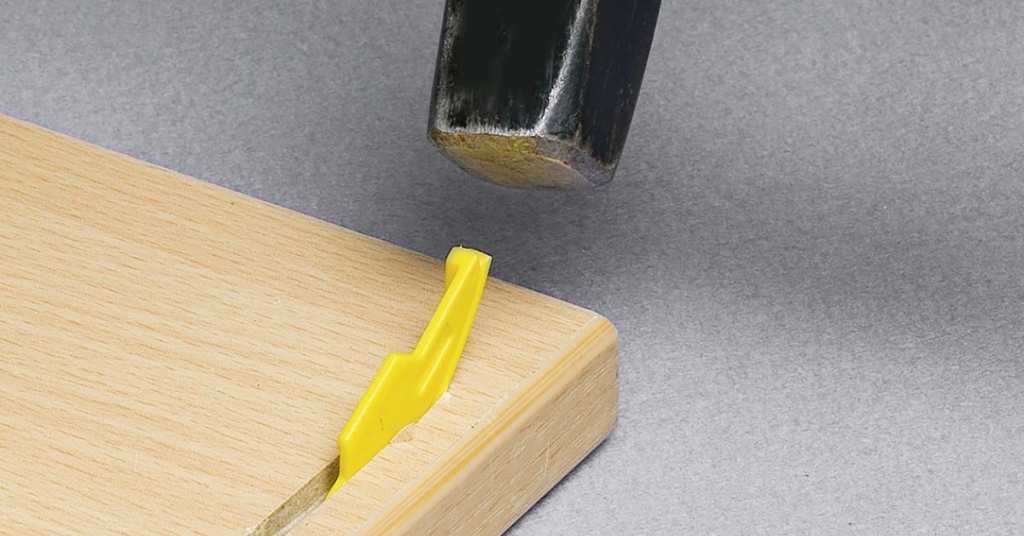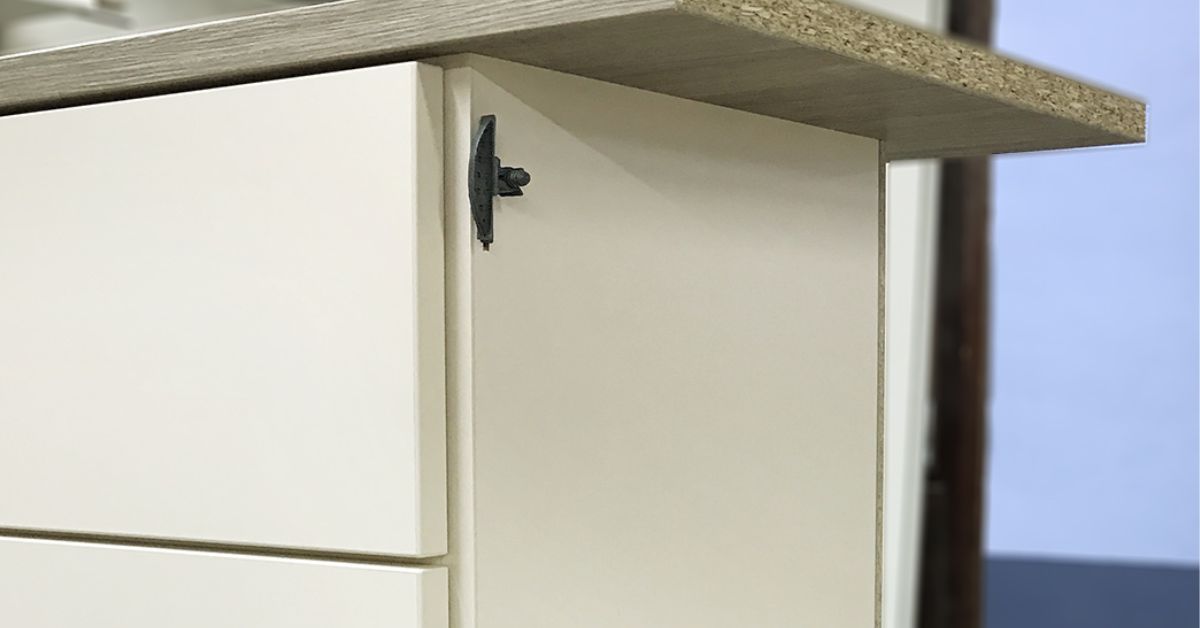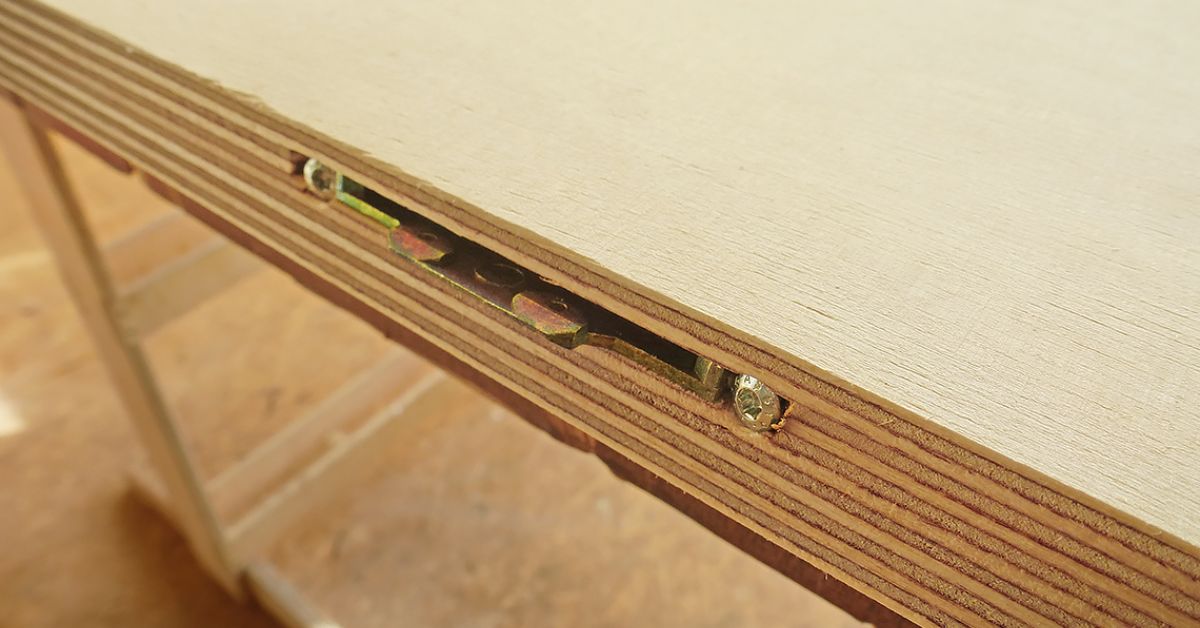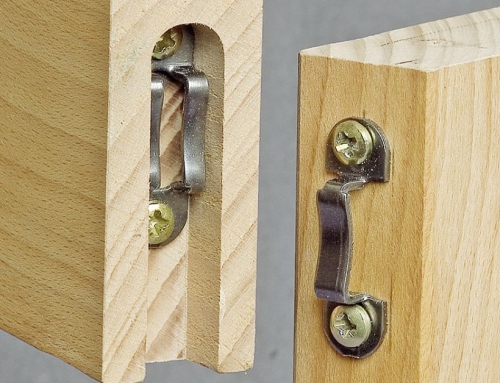When it comes to woodworking, biscuit joints often stir up heated debates in workshops. You’ve likely heard opinions ranging from “biscuit joints are too weak to hold anything” to “they’re a lazy alternative to traditional joinery.” If these statements have made you hesitate to grab your biscuit joiner, this guide is here to set the record straight.
With this helpful guide, you’ll debunk common biscuit joint myths and misconceptions to reveal their true potential and learn how they can benefit your woodworking projects. By the time you finish reading, you’ll see these humble wooden connectors in an entirely different light.
Understanding Biscuit Joints
Using a small, football-shaped piece of compressed wood known as a biscuit, a biscuit joint is an effective technique for alignment and joinery. Grab your biscuit joiner, cut matching slots into two workpieces, apply wood glue, insert the biscuit, and enjoy a snug fit after the glue dries.
For projects that require easy assembly and disassembly, biscuit joints are suitable knock-down connectors. By creating precisely aligned slots and using removable biscuits, you can guarantee a sturdy fit without committing to permanent bonds.
Myth 1: Biscuit Joints Are Too Weak for Serious Woodworking
The Claim
Many woodworkers dismiss biscuit joints as inadequate for supporting heavy loads, claiming they simply don’t match the strength of joinery like mortise and tenon or dovetails.
The Reality
The truth is that biscuit joints are perfectly suited for specific applications. Though they may not have the brute strength of a mortise-and-tenon joint, their strength-to-effort ratio makes them an invaluable tool. For tasks like tabletop construction, edge jointing, and case assembly, biscuit joints can work wonders.
If you’ve ever seen a piece of woodworking with perfectly flush seams, you can thank biscuit joints. These handy connectors hold things together while keeping them aligned and seamless. When joining long or wide boards with frequent gaps, biscuit joints are especially beneficial.
Myth 2: All Biscuit Joiners Are the Same
The Claim
Some woodworkers believe that investing in a high-quality, solid biscuit joiner is a waste of money, as cheaper options can get the job done fine.
The Reality
Like with most tools in woodworking, you get what you pay for, and cheap biscuits can lead to uneven slots and other headaches. On the other hand, a high-quality biscuit joiner allows you to cut precise, consistent slots and easily adjust your cutting depth.
When you work with poor-quality tools, slots might turn out inconsistent or too loose, leading to poor alignment and weak bonds. Always think long-term; investing in better equipment pays off in accuracy and efficiency over time.
Myth 3: Biscuits Only Work for Simple, Entry-Level Projects
The Claim
It’s a common misconception that biscuit joints are only good for beginners or basic projects, sidelining them as unfit for advanced artisanship.
The Reality
While biscuits are extremely beginner-friendly, they remain a mainstay for professionals who value efficiency and alignment. Even top-level woodworkers rely on biscuit joints for certain applications, like assembling cabinets, aligning wide boards, or working with veneered panels to prevent misalignment.
Suitable for jobs that demand precision, speed, and consistency, biscuit joints are one of many effective tools in your arsenal.
Myth 4: Glue Does All the Work, Not the Biscuit
The Claim
Downplaying the biscuits’ role as a mere piece of decoration, some people argue that a biscuit joint relies wholly on glue for strength.
The Reality
Though wood glue is a critical component of biscuit joinery, the biscuit itself plays an essential role in alignment and stability. First, biscuits swell when exposed to glue, filling the slot and creating a tight fit. This expansion adds extra holding strength and prevents a shift during the curing process.
Without biscuits, aligning pieces perfectly during glueing can become, well, a sticky situation.
Myth 5: Biscuits Can’t Handle Humidity or Temperature Changes
The Claim
Some fear that biscuits expand too much in humid conditions, causing joints to swell and eventually fail.
The Reality
Biscuits may be made from compressed beech or similar woods that expand with moisture, but they do this to form a strong bond at the time of gluing. Once set, they won’t continue expanding endlessly or mysteriously fall apart from normal changes in humidity.
To keep your biscuits ready for use and prevent premature swelling, store them in a dry, moisture-free container. Biscuits are small but mighty tools, designed to handle the natural flex and give-and-take of wooden furniture.
Myth 6: Biscuit Joints Are Lazy
The Claim
One argument you might hear is that using biscuit joints is “cheating” compared to traditional, hand-cut joinery.
The Reality
Steeped in tradition, hand-cut dovetails and mortise-and-tenon joints are undeniably stunning. However, the elegance of other tools doesn’t mean biscuits are a lazy choice. Keep in mind that woodworking techniques evolve because they need to serve a practical purpose, which is how biscuits came into being.
Though some woodworkers remain convinced otherwise, biscuit joinery is an efficient method that saves time and effort while delivering solid, professional results. Great woodworking isn’t about struggling unnecessarily. Instead, it should be about using the right tools and techniques for the project at hand.
When To Reach for Biscuit Joints in Your Builds
Now that we’ve cleared up the myths, you may be wondering when to use biscuit joints. Discover some common scenarios where these tiny but powerful connectors excel:
- Edge jointing boards: By using biscuit joints, you can create seamless tabletops or panels without misalignment.
- Attaching face frames: Perfect for connecting cabinetry components, biscuit joints come in handy if you need to replace or remodel your cabinets.
- Adding support: Biscuits work wonderfully for joining miters and keeping corners flush.
- Quick assembly projects: Biscuits are the ideal connectors for bookshelves, lightweight tables, or other furniture that doesn’t require excessive structural support.
Once you understand their strengths and limitations, we’re confident biscuit joints will become your go-to connectors for projects of all sizes.
Whether you’re aligning tabletop boards to perfection or assembling cabinetry in record time, you can rely on biscuit joints for efficiency and precision without compromising quality. By debunking common biscuit joints myths and misconceptions, you can approach your projects with confidence and the right tools for the job.
If you’re looking to add some biscuit joints to your woodworking tool kit, head over to Knapp Connectors to explore our vast collection.







